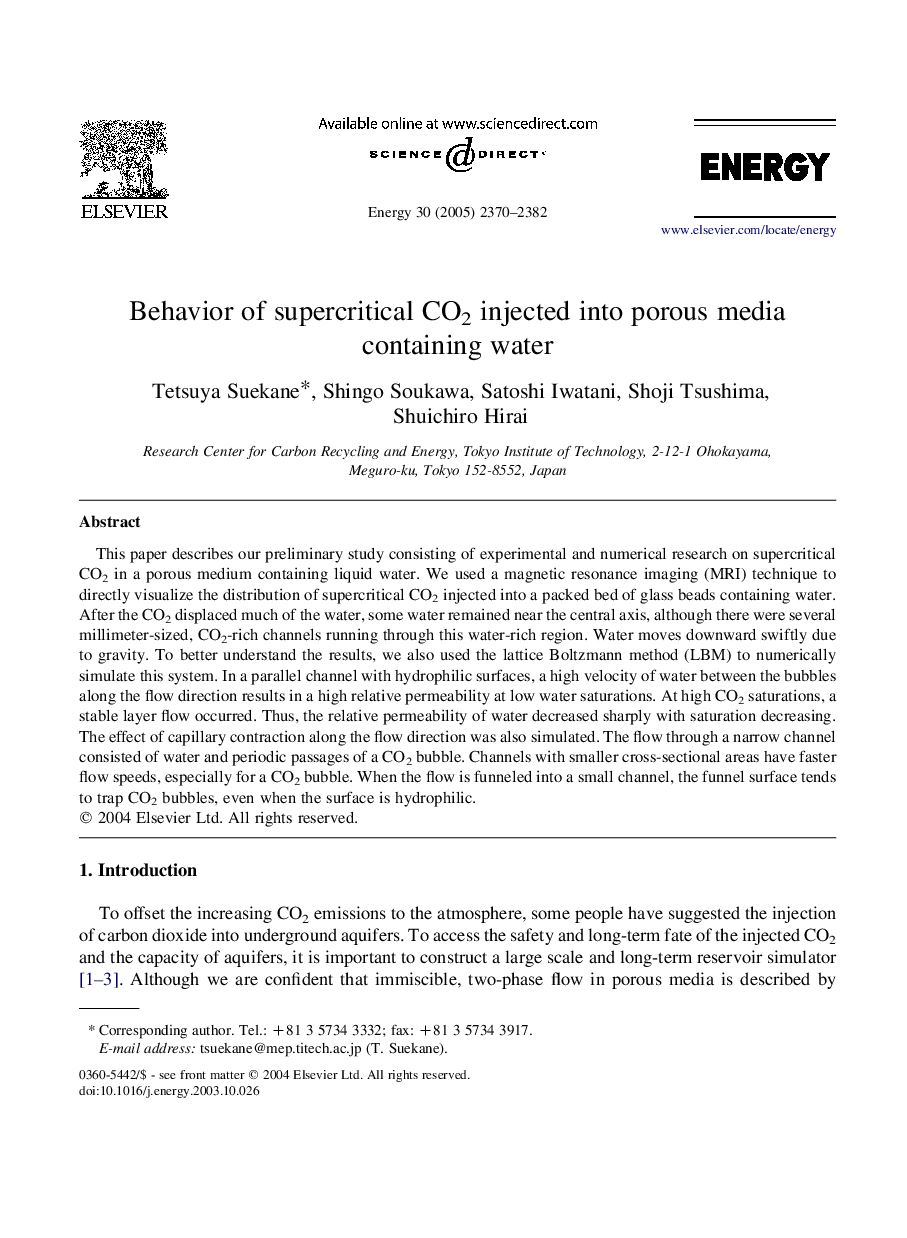| Article ID | Journal | Published Year | Pages | File Type |
|---|---|---|---|---|
| 1736619 | Energy | 2005 | 13 Pages |
This paper describes our preliminary study consisting of experimental and numerical research on supercritical CO2 in a porous medium containing liquid water. We used a magnetic resonance imaging (MRI) technique to directly visualize the distribution of supercritical CO2 injected into a packed bed of glass beads containing water. After the CO2 displaced much of the water, some water remained near the central axis, although there were several millimeter-sized, CO2-rich channels running through this water-rich region. Water moves downward swiftly due to gravity. To better understand the results, we also used the lattice Boltzmann method (LBM) to numerically simulate this system. In a parallel channel with hydrophilic surfaces, a high velocity of water between the bubbles along the flow direction results in a high relative permeability at low water saturations. At high CO2 saturations, a stable layer flow occurred. Thus, the relative permeability of water decreased sharply with saturation decreasing. The effect of capillary contraction along the flow direction was also simulated. The flow through a narrow channel consisted of water and periodic passages of a CO2 bubble. Channels with smaller cross-sectional areas have faster flow speeds, especially for a CO2 bubble. When the flow is funneled into a small channel, the funnel surface tends to trap CO2 bubbles, even when the surface is hydrophilic.
